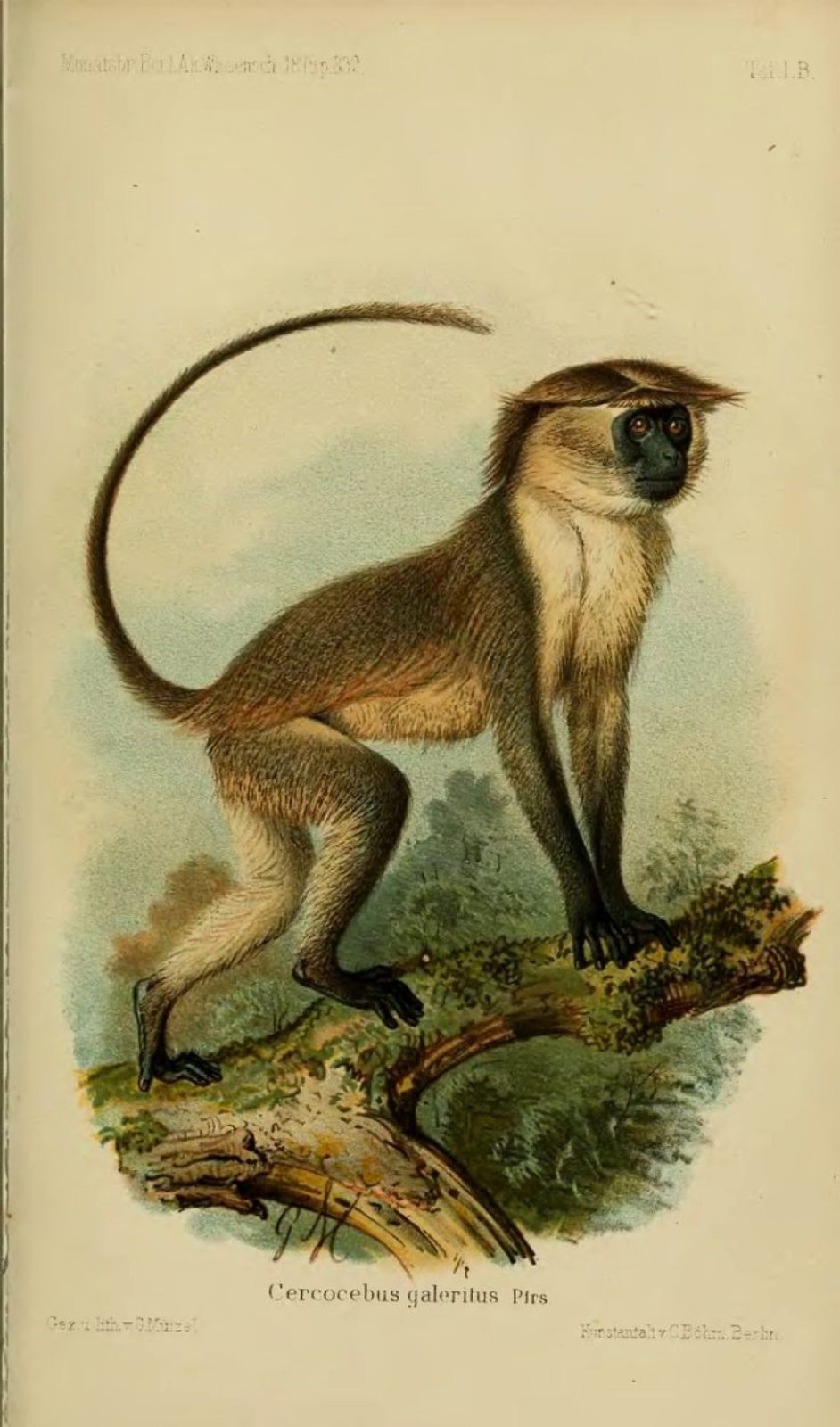
Tana-river Mangabey
The Tana River mangabey (Cercocebus galeritus) is a highly endangered species of primate in the family Cercopithecidae. Some authorities have included the Agile mangabey and Sanje mangabey as subspecies of this species, while others award these full species status. These are listed alongside them, or you can click on their names above.
It is exclusively found in the riverine forest patches along the lower Tana River which is found in south-eastern Kenya. It is threatened by habitat loss and degradation, which has increased in recent years (this is at least partially linked to increasing human populations. This species was, together with the equally endangered Tana River red colobus, the main reason for the creation of the Tana River Primate Reserve in 1978, but human encroachment within this reserve continues. Recently, it has been suggested that 20,000 hectares of the Tana River Delta should be transformed into sugarcane plantations, but this has, temporarily at least, been stopped by the High Court of Kenya. Whether this injunction remains in place, will have to come apparent over time – this reserve could be worth a great deal to the local people if local eco-tourism could take off. Help me make this website a success, so that we can make all wildernesses big and small, worth more to the neighbouring people intact, than the land is without the ecosystem which is left.
The Tana river mangabey is a mid-sized yellow-brown primate, with a long semiprehensile tail and long dark fur. It has white eyelids, which are noticeble given its black face. It is thought that the eyelids are part of the species complicated way of communicated. Its teeth are set up for feeding on hard nuts, seeds and fruits.
It is active during the day, and while it spends much of its time on the ground, it is considered arboreal as it sleeps i the trees – at heights of 27-37m up, in forks of the branches near the main trunk. It is thought to sleep up high to reduce the risk of predation, but also choses to sleep near where it is feeding.
Generally, living in groups between 13 and 36, these groups occasionally join to form larger groups. Over a day, they generally move less than 1.25km. During the dry season, when there is little food, groups have discrete territories, which do not overlap very much . In order to maintain these, males give spatial vocalization and territorial displays at fixed boundaries. When these are ignored, males often engage in physical combat. In the web season when food is abundant, these boundaries do not exist. During these periods, there is more freedom to roam, as well as a greater willingness to mingle with other groups.
The predators of the area include hte central African Rock python, crowned eagle, martial eagle and the Nile crocodile.
Any articles on this species will appear below in a scrolling list. Below this, you will see any links or contacts we have to allow you to visit the area in question.